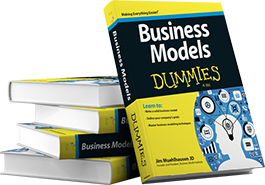Is Barnes & Noble’s Business Model in Trouble?
Could Barnes & Noble (NYSE: BKS) be the next Blockbuster? The once-dominant Blockbuster business model disintegrated into bankruptcy this year and seems unlikely to ever rebound. A close look at the Barnes & Noble business model yields many of the same issues as Blockbuster:
- Blockbuster faced intense competition from disruptive business models such as Netflix and Redbox. B&N’s business model is under attack from online competition, half-price bookstores, and Amazon.
- Blockbuster insisted on sticking with a retail store model despite signs that the growth was elsewhere. Barnes and Noble continue to focus on palatial retail bookstores despite retail rents of $250/square foot. In fact, B&N had to close a high-profile Lincoln Center location due to its $1.25 million monthly rent.
- Blockbuster was slow to embrace digital technology. The first Kindle was released in 2007. B & N released the Nook in November 2009. It is estimated that Amazon sold 3 million Kindles in 2009 alone, many of them prior to the release of the Nook.
- Barnes & Noble margins continue to decrease while competitors increase margins through lower cost operating models
| Banners & Noble Income & Expense | |||||
| First Half 2010 * 2 | 2009 | 2008 | 2007 | 2006 | |
| # Stores | 717 | 774 | 798 | 801 | 804 |
| Sales | 6,604,294 | 5,121,804 | 5,410,828 | 5,261,254 | 5,103,004 |
| Margin | 1,603,640 | 1,251,524 | 1,640,821 | 1,638,292 | 1,569,995 |
| Net Profit | 150,170 | 75,920 | 135,799 | 150,527 | 146,681 |
| % Margin | 24% | 24% | 30% | 31% | 31% |
From the outside it appears Barnes & Noble is working from the Blockbuster Business Model Playbook. They insist on hanging onto a dying business model at all costs. They ignore disruptive technology as an annoyance rather than an opportunity. They come late to the technology party with “better” products like the Nook Book reader.
Certainly there is a need for brick and mortar bookstores. Unlike videos, one doesn’t go to the bookstore twice a week. It is unlikely that vending machines will start dispensing books. However, digital books have already made significant inroads. What does it mean to Barnes and Noble if digital books become 50% of all book sales. Effectively, this cuts each B&N store’s sales in half thereby making nearly all of them unprofitable.
Amazon’s Kindle has a huge head start in the digital market. It appears that the Nook will be the equivalent of Blockbusters video vending machines – superior in features yet little market acceptance.
So what is Barnes & Noble to do? First, B&N must come to the realization that there will be 1/5th the number of retail bookstores in 2020 than there are today. To combat this, Barnes & Noble must actively embrace the next new technological innovation. It doesn’t matter what the innovation is. They have already lost the digital book reader race as well as the online bookstore race. It’s time for them to bet on some new technologies and hope they can leapfrog their current situation.
In addition, Barnes and Noble should take a look at what IS working: closing stores. Their store count continues to shrink but sales per store has increased from $6.8MM per in 2008 to $9.2MM in 2010. This is almost entirely due to reduced store count. Instead of allowing the market to force store closings, Barnes and Noble should proactively right-size. Better yet, B&N should buy Borders. Last week, Bill Ackman who owns 37% of Borders said he would back a purchase of B&N at $16/share. The idea of a Borders/B&N merger makes sense but $100 million market capitalization Borders should be the target, not the acquisition. B&N’s market capitalization is ten times that of Borders. I am dumbfounded that B&N can’t wrangle up $100 million just to shutter Borders. Closing their own stores isn’t free. Simply buy all 519 Borders stores and close 500 of them. That is a cost of only $200,000 per store closing. Borders sales for 2010 were $2.8 billion. Assuming only 25% of Borders business flows to a nearby Barnes and Noble at their standard 24% margin, this adds $168 million per year to B&N’s bottom line and effectively doubles their market capitalization adding another $900 million
The bottom line is that Barnes & Noble better get serious about changing their business model. It’s time for inventor of the big-box to lead again. The current Barnes & Noble business model of slightly better coffee bar, slightly bigger store, and slightly more featured book reader isn’t working.










